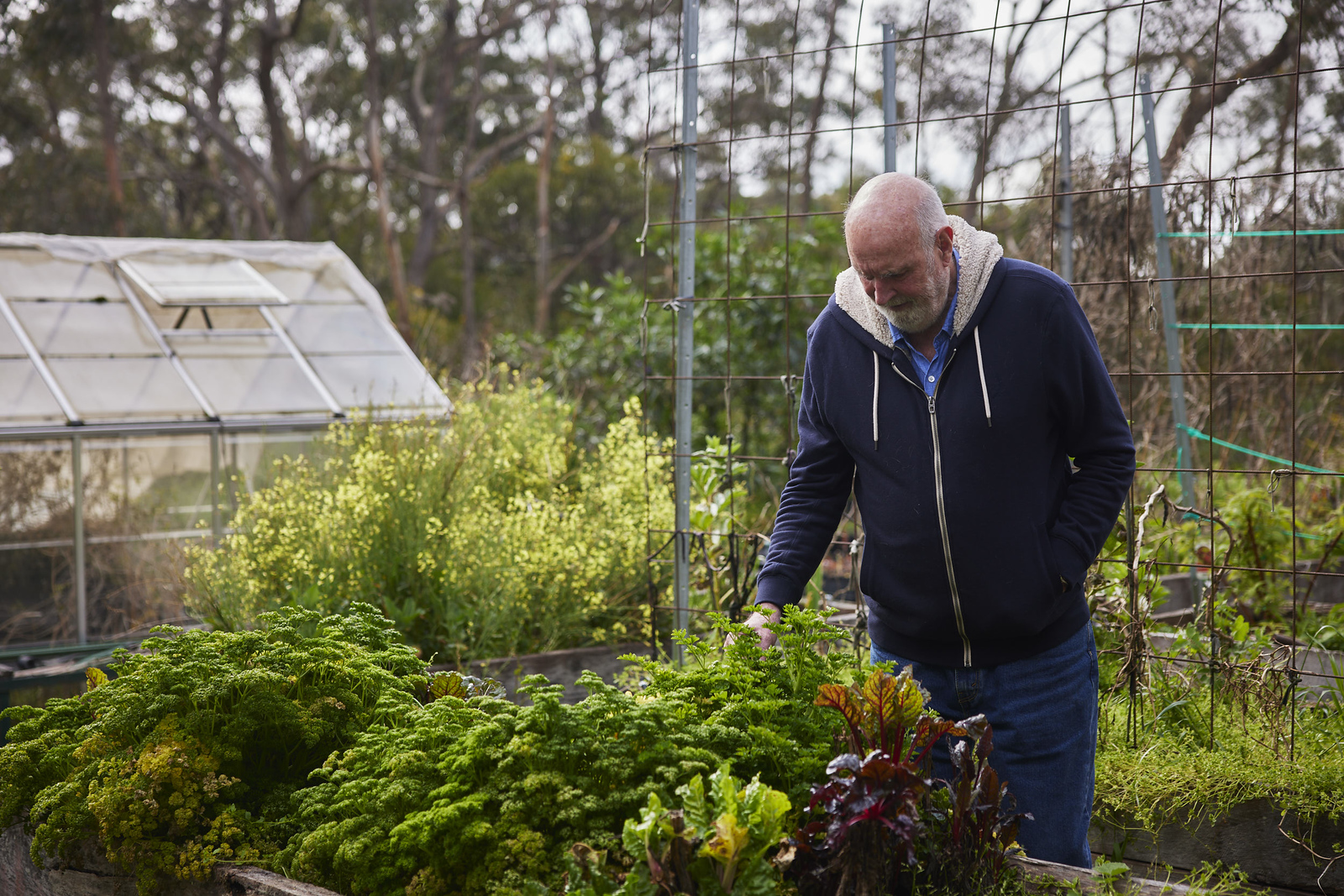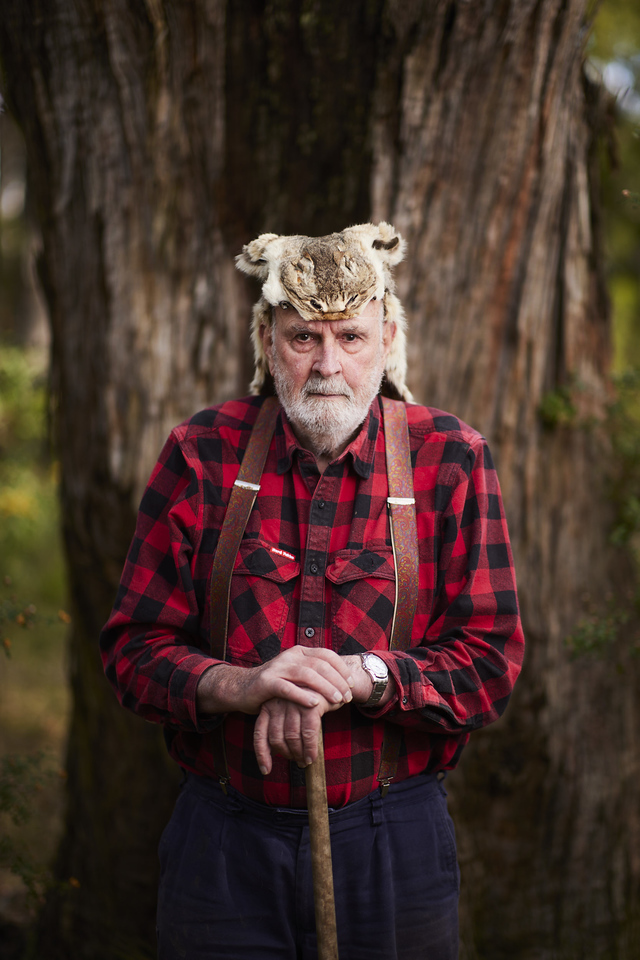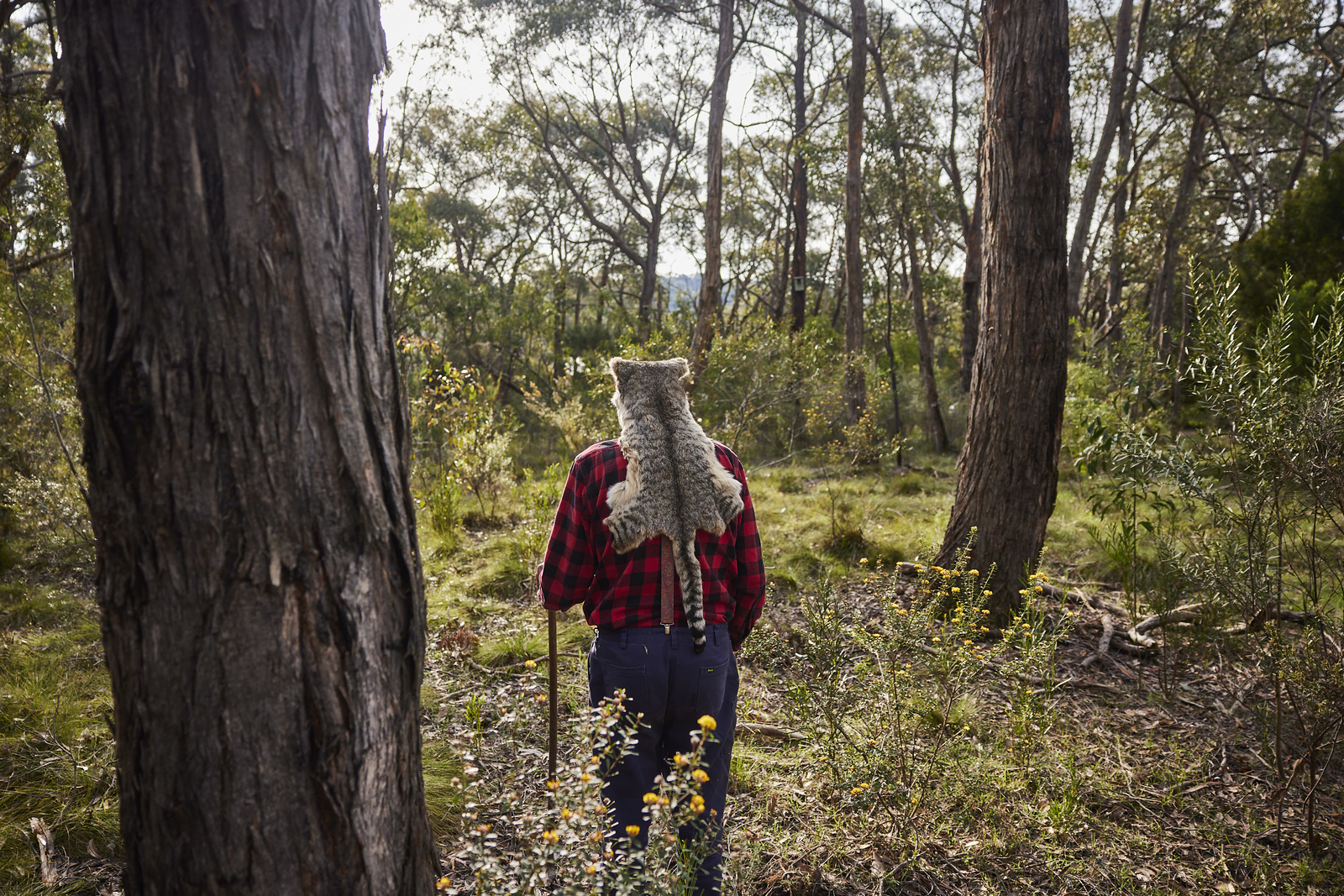Australian Geographic Society Gala Awards 2022: Lifetime of Conservation, John Wamsley OAM

John’s infamous fashion statement was made at the 1991 South Australian Tourism awards, where he wore the pelt of a feral cat on his head. His native animal sanctuary, Warrawong Wildlife Sanctuary, was up for an award, and John and his wife, Proo Geddes, saw a golden opportunity to make a powerful statement about one of the chief causes of biodiversity loss in Australia – feral invasive species.
John has never shied away from any fight where the welfare of Australia’s native floral or faunal species is at stake. Now in his mid-80s, he can still be found on most days on his hands and knees pulling weeds out of a small nature reserve near his home in the Adelaide Hills, not far from the site of his beloved Warrawong. He no longer owns the legendary wildlife park, but his legacy is writ large in the history of Australian conservation even if most people today don’t immediately recognise the name. Many of his ground-breaking ideas and innovations form part of many widely accepted conservation practices today and have been implemented by leading organisations such as Australian Wildlife Conservancy nationally and Arid Recovery in South Australia, among others.
John found solace in nature from an early age. The bush surrounding his rural home at Niagara Park on the central coast of New South Wales provided an escape from the noisy household he shared with his parents and six sisters. He showed an early gift for mathematics, excelled in it at school, gained a maths degree at the University of Newcastle and subsequently earned his PhD. He was also a natural businessman with strong commercial instincts and boasted an impressive property portfolio by his early 20s. In 1969, at the age of 30, he moved his young family to Adelaide to take up a teaching role at Flinders University. South Australia was the only state where it wasn’t illegal to keep native animals and he harboured an ambition to create a wildlife sanctuary. He bought a 14ha former dairy farm in the Adelaide Hills and named it Warrawong.
Little was known about Australia’s native flora and fauna in those days and conservation was in its infancy, but John revegetated the degraded property with native plants and watched the birdlife flourish. This critical relationship between vegetation and native wildlife wasn’t yet fully understood, but John’s life of activism began when he started advocating for the restoration of local native vegetation to help repair biodiversity, not just at Warrawong but also further afield. John’s campaign to remove introduced radiata pine trees led to conflicts with his neighbours and run-ins with the authorities. He was arrested and locked up for “damage to a tree in an avenue worth more than $2”, after being caught in the act of felling a pine tree outside his own property.
John realised that if he were to stock Warrawong with native mammals he would need to fence out the foxes, cats and rabbits that would prey on them and their food sources. In 1981 he built his first exclusion fence, and after some trial and error, the animals within the sanctuary thrived.
He hadn’t conceived of Warrawong as a public attraction, but John and Proo started to take visitors on guided night walks to introduce them to the mostly nocturnal residents such as potoroos, bettongs, bandicoots, possums and quolls. Before long Warrawong became a popular tourist attraction.
John found himself at odds with various authorities over aspects of his wildlife management practices. Traditional zoos kept species caged and separated to avoid interbreeding, but John’s animals mixed freely and bred successfully. He was outspoken about the shortcomings of official attempts at conservation and the failure of the national parks system to proactively restore native habitat and properly manage invasive vegetation.

Warrawong’s most notable success was the successful breeding of the platypus, a creature extinct in SA since the 1970s and one that had proved notoriously hard to breed in captivity. John’s methods were always a potent reflection of his keen intellect, business nous and those firsthand observations of animal behaviour over long periods of time. He was no qualified biologist but his private conservation initiatives often succeeded where public efforts failed and he became a divisive and outspoken figure.
“The critical relationship between vegetation and native wildlife wasn’t yet fully understood.”
He went on to establish the 5000ha Yookamurra Sanctuary in the Murray Mallee to continue his mission at scale (see Fenced in and free, AG 51). He saw that large-scale fenced enclosures could work to secure at-risk populations of native creatures, and was the first to attempt to put a dollar value on nature itself. He established a private company called Earth Sanctuaries Pty Ltd to attract investors and raise capital to fund large scale conservation at Yookamurra.
Before native species could be introduced there, ferals had to be removed. Rabbits and foxes were successfully eradicated, but it was unlawful to kill any cat in SA and without the ability to cull feral cats, Yookamurra couldn’t succeed. It was to focus attention on this legal obstacle that John wore the pelt to the 1991 tourism awards. “Proo said to me, ‘You’re going to wear that hat tonight, and you’re going to change the law on cats’,” says John. “We in fact won the award and it hit the front page of the Advertiser and gradually spread around the world. There was a meeting of environment ministers taking place that week in Adelaide and within a fortnight they’d changed the law,” he says.
In 2000 John’s attempt to float his Earth Sanctuaries company failed and he and Proo sold Warrawong Sanctuary. John’s efforts and achievements faded from view. His ideas were ahead of their time and his combative spirit often put him offside with more conservative authorities who failed to recognise the urgency of biodiversity decline in Australia. The Australian Geographic Society is awarding John the Lifetime of Conservation medallion for his outstanding contribution to conservation in Australia.







